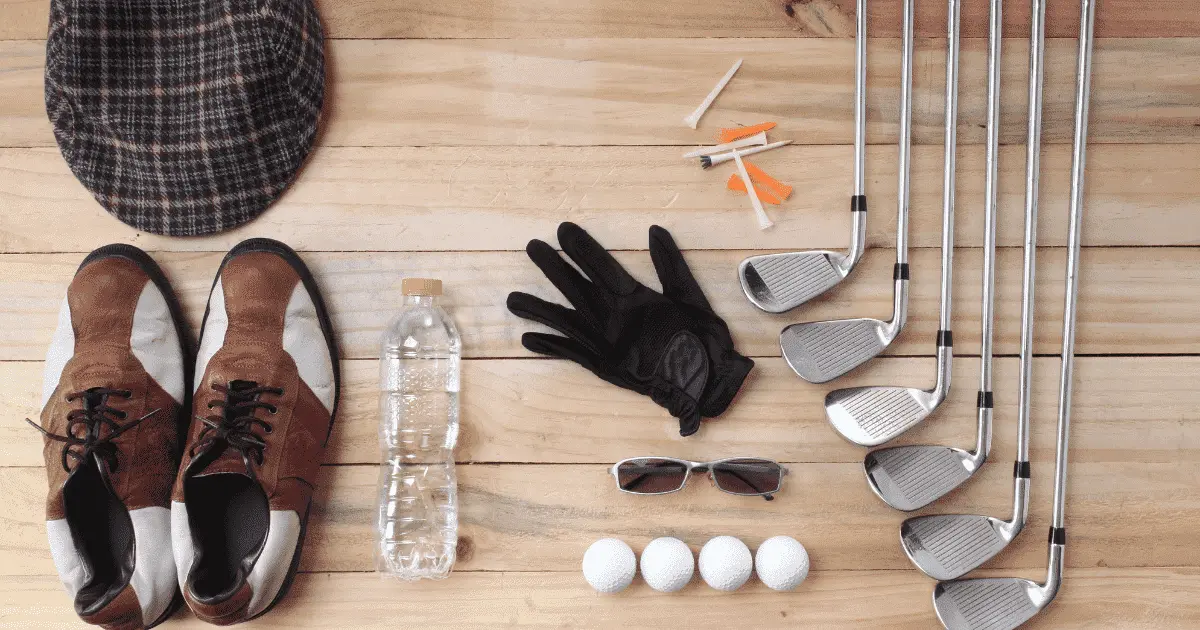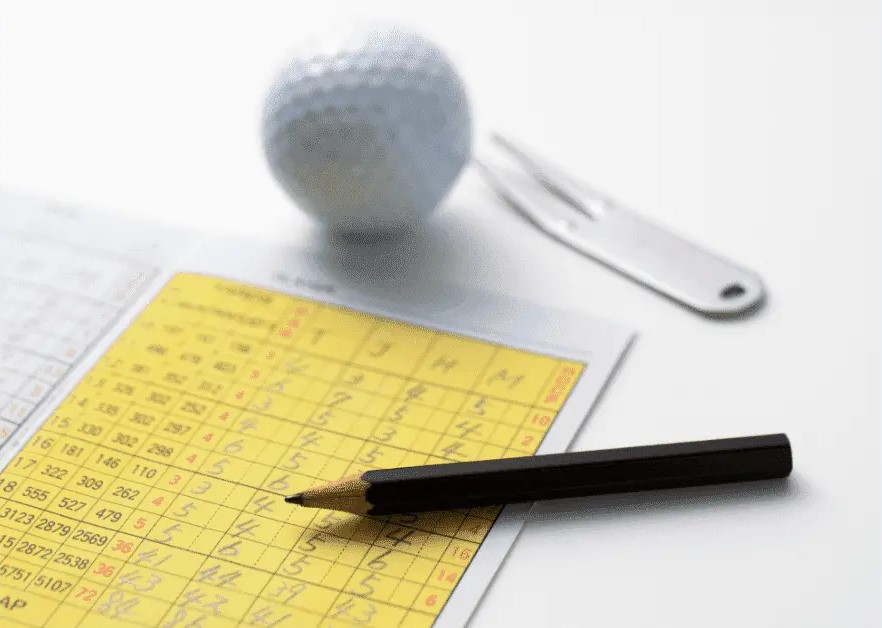Welcome to the exciting world of golf! If you’re a beginner, you’re in for a treat. You may have seen the pros play on TV, but there’s nothing quite like the thrill of teeing up for the first time and watching your ball soar through the air. Whether you’re looking to improve your skills, get some exercise, or just enjoy a beautiful day outside, golf is a fantastic sport to try. And don’t worry if you’re feeling a bit intimidated – we’ve got you covered with all the basics. So grab your clubs, put on your sunscreen, and get ready to have some fun!
Understanding the Game – Basic concept
Golf is a sport in which players hit a small, hard ball into a series of holes on a course using as few strokes as possible. The objective of the game is to complete the course with the lowest possible score.
Each hole on the course is designated by a number and is typically either a par 3, 4, or 5. Par is the number of strokes a skilled golfer should take to complete the hole. For example, a par 3 hole should take three strokes, a par 4 hole should take four strokes, and a par 5 hole should take five strokes.
To start the game, each player tees off from the tee box, which is the designated area to begin each hole. From there, players hit their ball towards the green, which is the area surrounding the hole. Once on the green, players use a putter to hit the ball into the hole.
In addition to stroke play, golf can also be played in a variety of formats, including match play, scramble, and skins. Each format has its own set of rules and strategies.
Types of golf courses and holes
As a beginner golfer, it’s important to understand the different types of golf courses and holes. Golf courses can vary in size, terrain, and design, which can greatly impact the difficulty of the game. Here are some common types of golf courses and holes you may encounter:

- Links courses: These courses are typically located in coastal areas and feature a lot of sand dunes and tall grass. Links courses can be very challenging due to the windy conditions and difficult bunkers.

- Parkland courses: These courses are located in wooded or suburban areas and typically feature more trees and foliage. Parkland courses may also have lakes or ponds that come into play on certain holes.

- Desert courses: These courses are located in arid regions and feature a lot of sand and rock formations. Desert courses can be very challenging due to the difficult terrain and high temperatures.
As for the holes themselves, here are some common types of holes you may encounter:
- Par 3 holes: These holes are typically shorter in length and require fewer shots to complete. Par 3 holes can be very challenging due to their small size and the need for accuracy.
- Par 4 holes: These holes are of moderate length and require more shots to complete than par 3 holes. Par 4 holes can be challenging due to their length and the need for accuracy off the tee.
- Par 5 holes: These holes are the longest and require the most shots to complete. Par 5 holes can be challenging due to their length and the need for accuracy on multiple shots.
Note: Each golf course and hole is unique, and may have its own challenges and hazards. As you gain more experience and skill, you’ll learn how to approach each hole and adjust your strategy accordingly.
Golf equipment you will need

Golf Clubs

- Driver: The driver is the longest club in your bag, and it’s designed to hit the ball the farthest. You’ll use your driver on the tee box, and it’s the club you’ll use to hit your first shot on each hole.
- Fairway Woods: Fairway woods are designed to hit the ball a long distance from the fairway or rough. They have a larger head and longer shaft than irons, making them easier to hit for some golfers.
- Irons: Irons are the most versatile clubs in your bag, and you’ll use them for a variety of shots on the golf course. They come in sets of 6-9 clubs and are numbered based on their loft angle, with lower numbers hitting the ball farther.
- Wedges: Wedges are designed for shots that require a high degree of accuracy and precision, such as chipping and pitching around the green. There are several types of wedges, including pitching wedges, sand wedges, and lob wedges.
- Putter: The putter is the most important club in your bag when it comes to scoring. It’s used to roll the ball into the hole on the green, and it’s the club you’ll use for the majority of your shots on the green.
Note: As a golfer, you’re allowed to carry up to 14 golf clubs in your bag during a round of golf. While it’s not required to carry the full allotment of clubs, it’s recommended that you have a variety of clubs to choose from depending on the type of shot you’re faced with.
Many golfers carry a driver, a few fairway woods, a set of irons (usually 6-9 clubs), a few wedges, and a putter. However, the specific clubs you choose to carry will depend on your personal preferences and playing style.
It’s also worth noting that some golf courses have restrictions on the types of clubs you can carry. For example, some courses may prohibit the use of certain types of clubs (such as high-lofted wedges) to protect the turf. It’s always a good idea to check with the course beforehand to see if there are any restrictions in place.
Golf Balls

- Compression: Golf balls are classified based on their compression rating, which refers to how much the ball compresses when it’s struck by the clubface. Low compression balls are softer and easier to compress, making them ideal for slower swing speeds, while high compression balls are harder and more difficult to compress, making them better for faster swing speeds.
- Spin: Golf balls also vary in terms of the amount of spin they produce. High spin balls produce more spin, which can be beneficial for controlling shots around the green. Low spin balls produce less spin, which can be beneficial for achieving maximum distance off the tee.
- Cover material: Golf balls have either a soft or hard cover material. Soft cover balls are typically more expensive and provide better feel and control around the green. Hardcover balls are more durable and provide more distance off the tee.
- Dimples: The dimples on a golf ball affect its aerodynamics and can impact its flight path. Golf balls with more dimples tend to fly higher and have a softer landing, while golf balls with fewer dimples tend to fly lower and have a harder landing.
Note: When choosing a golf ball, it’s important to consider your skill level, swing speed, and the type of shots you typically hit. Experimenting with different types of golf balls can help you find the ball that works best for your game.
Golf Bags

Club storage: The primary purpose of a golf bag is to store and transport your golf clubs. Most golf bags are designed to hold a full set of 14 clubs, and they typically have individual compartments or slots for each club to keep them organized and protected.
Convenience: Carrying your golf clubs around the golf course can be tiring, so a golf bag with a comfortable strap or a stand can make the experience more convenient and enjoyable. A stand allows you to easily access your clubs without having to lay the bag on the ground.
Accessory storage: Golf bags typically have pockets and compartments for storing accessories such as golf balls, tees, gloves, and a rangefinder. Some bags even have a cooler pocket for storing drinks and snacks.
Style: A golf bag can also be a fashion statement on the golf course. Golf bags come in a variety of styles and colors, allowing you to express your personality and preferences.
Others

- Golf Gloves: Golf gloves provide grip and comfort when swinging the golf club. They are typically made of leather or synthetic materials and come in various sizes and styles.
- Rangefinders: Rangefinders use laser technology to accurately measure distances on the golf course. They can be a valuable tool for selecting the right club and improving your accuracy.
- Tees: Tees are used to elevate the golf ball off the ground for tee shots. They come in different lengths and materials and are typically made of wood or plastic.
Golf rules you need to follow
As a beginner golfer, there are a few golf rules that you should follow to ensure a fun and fair game for everyone on the course. Some people carry a small rulebook with them to make sure they’re playing correctly. Although the official rule book is long and boring, it’s important to know the basic rules so you don’t make any big mistakes on the course. If you follow these basic rules, you’ll be able to enjoy the game and make good impressions on your fellow golfers. But don’t worry, these rules are easy to follow and will soon become second nature to you.
Here are some of the key rules to keep in mind:
- Teeing Ground: The ball must be placed on or behind the tee markers, and tee height must not exceed 2 inches.
- Order of Play: The player farthest from the hole plays first.
- Out of Bounds: A ball that goes out of bounds must be replayed from where the previous shot was played, adding a penalty stroke.
- Water Hazards: A player may play a ball from a water hazard if they can do so without standing in the hazard. Otherwise, they must take a penalty stroke and drop the ball behind the hazard.
- Bunker: A player may not touch the sand in the bunker before making their shot, and must not ground their club in the sand.
- Penalty Strokes: Various rules result in penalty strokes, such as hitting the ball out of bounds or into a hazard.
- Putting Green: A player may not touch the line of their putt or have anyone else touch it.
- Stroke Limits: Most holes have a recommended maximum number of strokes, known as a “par.” Players are expected to complete the hole within a certain number of strokes based on its par.
- Etiquette: Players are expected to behave in a sportsmanlike manner, and respect other players and the course. This includes repairing divots, raking bunkers, and keeping pace of play.
Note: These are just a few basic rules, but golf has a comprehensive rulebook that covers a wide range of scenarios and situations. It’s essential to familiarize yourself with the rules before playing to ensure a fair and enjoyable game.
Golf Etiquette
Many golf courses have a dress code in place to maintain a professional and respectful atmosphere on the course. Here are some common dress code guidelines to follow:
- Collared shirts: Golf courses typically require collared shirts for men, and often for women as well. This means no t-shirts, tank tops, or sleeveless shirts.
- Shorts and pants: Shorts and pants should be of an appropriate length, usually just above the knee or longer. Athletic shorts and denim are often not allowed.
- Golf shoes: Golf shoes with soft spikes or spikeless shoes are typically required on the course. Sneakers and other athletic shoes may not be allowed.
Note: It’s important to check with the specific golf course you’ll be playing at to ensure you are following their dress code guidelines. Additionally, it’s always a good idea to dress comfortably and appropriately for the weather conditions. By following proper golf attire, you’ll not only look the part, but also help maintain the professional and respectful atmosphere of the game.
Playing a round of Golf
A standard round of golf is typically 18 holes, with a total par of around 72 strokes. Some courses also offer 9-hole rounds, which take around 2-3 hours to complete and have a total par of around 36 strokes.
Calculate your score

To calculate your golf score, you need to add up the number of strokes you took to complete each hole on the course. Then, you compare your total score to the par for the course to determine whether you were over or under par.
For example, if you took 4 strokes to complete a par-3 hole, 5 strokes to complete a par-4 hole, and 6 strokes to complete a par-5 hole, your total score for those three holes would be 15. If the total par for those three holes was 12, then your score would be 3 over par (15 – 12 = 3).
You would repeat this process for all 18 holes on the course to determine your overall score for the round.
Golf Handicap
The most common way to calculate a handicap is to use the USGA Handicap System. This system takes into account the 10 best scores out of your last 20 rounds of golf, with adjustments made for the difficulty of the courses you played. The formula takes your average score, subtracts the course rating, and multiplies the result by a factor known as the slope rating, which accounts for the difficulty of the course relative to a standard course. The result is then rounded to the nearest tenth and capped at a maximum handicap of 36.4 for men and 40.4 for women.
There are also online handicap calculators available that can help you calculate your handicap quickly and easily. You simply enter your scores and the courses you played, and the calculator will do the rest.
According to the USGA, the average handicap for male and female golfers in the United States is around 14.2 and 27.5.
Enjoy the Game

That’s it! You are good to go. When you are on the green, get ready to enjoy a wonderful round of golf! Take a deep breath and let yourself relax.
As you step up to your first tee, take a moment to soak in the beautiful surroundings. The sun is shining, the birds are chirping, and the gentle breeze is just perfect for a day out on the course. It’s the perfect day for some golf!
As you swing your club, don’t worry too much about where the ball is going to go. Just focus on making a good connection and let the ball do the rest. Whether it goes straight down the fairway or takes a bit of a detour into the rough, it’s all part of the fun!
As you make your way through the course, take the time to appreciate the little things – the way the trees sway in the wind, the smell of freshly cut grass, and the sound of your friends’ laughter as you all enjoy the game together.
And when you finally reach the 18th hole, take a moment to savor the feeling of accomplishment. You did it! You made it through the entire course and had a great time doing it.
Hi! I am Hannah, a golf enthusiast, have been perfecting my swing for over a decade, making long putts a breeze. Aside from playing, I am a professional golf writer, I try capture the nuances of the game and inspire others to embrace their love for golf. Follow me on Twitter.

